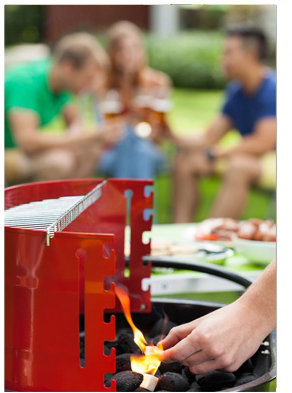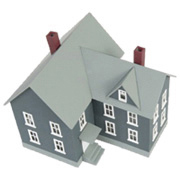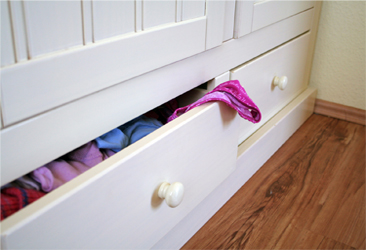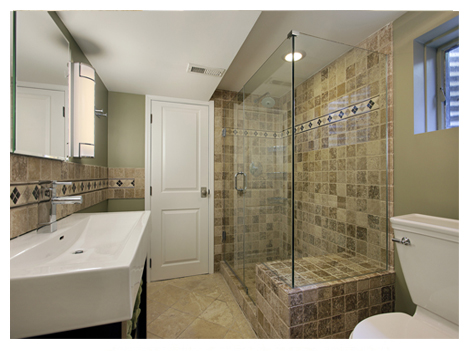



Want to make a huge difference in another person’s life? Want to make a huge difference in your life? Here are things you should say every day -- to your employees, colleagues, family members, friends, and everyone you care about:
- “Here’s what I’m thinking.” You’re in charge but that doesn’t mean you’re smarter, savvier, or more insightful than everyone else. Back up your statements and decisions. Justify with logic, not with position or authority. Authority can make you “right,” but collaboration makes everyone right.
- “I was wrong.” I came up with an awesome plan to improve productivity by moving a crew to a different shift. Turns out I was wrong. Later one employee said, “I didn’t really know you, but the fact you were willing to admit you were wrong told me everything I needed to know.”
- “That was awesome.” No one gets enough praise. Pick someone - pick anyone who does or did something well and say, “Wow, that was great…” Praise is a gift that costs the giver nothing.
- “You’re welcome.” Think about a time you gave a gift and the recipient seemed uncomfortable or awkward. The same thing can happen when you are thanked, complimented or praised. The spotlight may make you feel uneasy or insecure. Make eye contact and say, “You’re welcome.”
- “Can you help me?” When you need help, just say, sincerely and humbly, “Can you help me?” You’ll show vulnerability, respect, and a willingness to listen -- which are all qualities of a great leader or friend.
- “I’m sorry.” We all have things we need to apologize for: words, actions, omissions, failing to step up, show support. Say you’re sorry, say why you’re sorry, and take all the blame. No less. No more.
- “Can you show me?” When you ask to be taught you implicitly show you respect the person giving the advice; you show you trust his or her experience, skill, and insight.
- “Let me give you a hand.” Many people see asking for help as a sign of weakness. But everyone needs help. Find something you can help with. Say “I’ve got a few minutes. Can I help you finish that?”.
- “I love you.” No, not at work, but everywhere you mean it -- and every time you feel it.
- Nothing. Sometimes the best thing to say is nothing at all. If you’re upset, frustrated, or angry, stay quiet. Be quiet until you know exactly what to say -- and what affect your words will have.
Jeff Hayden
Ghostwriter & Speaker


If you’ve fallen under the spell of reality TV’s quick, dramatic transformations of fixer uppers, don’t be fooled into believing that the fairy tale ending is always the case.
Buying a fixer upper is a huge decision that shouldn’t be taken lightly. Here are some considerations to keep in mind if you’re looking at a diamond in the rough:
- Pride - If you love taking pride in your work and have the necessary skills, a fixer upper might just be the way to go.
- Personality - An older home will give you charm and character and fixing it up means you can add your own personal style.
- Inspect the Unexpected - Getting a home inspection is highly recommended so you don’t end up with a structurally flawed money pit.
- Getting Your Foot In the Door - Buying a fixer upper can be a great way to get into an area that you may not otherwise have been able to afford.
- Strong Foundation - Purchasing a fixer upper with a partner or spouse can put immense pressure on a relationship. The unexpected twists will drain time, money and energy. Living with the mess can also be stressful.
- Think Ahead - You may get a great deal but you need to carefully examine whether or not it will be a bargain in the long run. Think like the buyer who will one day purchase your home.
Buying a fixer upper can be an extremely rewarding experience but a lot of work. It is important to carefully examine the various pros and cons.

Wishing you had more square footage? Here are ideas to maximize the space you have.

- Let furniture float. Move furniture in from the edge of the room, leaving at least 36 inches of space so people can pass comfortably, and angle the pieces inward to create a cozy spot for conversation.
- Cover the territory. Opt for a large rug in place of a small accent rug. Your carpet should extend just under the edge of your furniture.
- Expand your horizon. The bigger the mirror, the larger the room will seem. A mirror should take up no more than three quarters of the wall.
- Aim high. Whether it is floor lamps or a bookcase, opt for tall pieces. Even rooms with low ceilings can benefit from the height.
Less is more. Know when to say when. Having too many accessories can clutter your space. Stick to a well-edited mix of accents (votives in the same color, say, or throw pillows in the same print) to pull your room together.

As summer heat sets in, household debates often turn to how high or low to set the thermostat. Stay cool and save money this summer with these suggestions.

- Install a programmable thermostat. Set times and temperatures to match your schedule. Consider setting the thermostat to turn off your air conditioner at night.
- Use ceiling fans to circulate cool air. Fan blades should operate in a counter-clockwise direction to move the air downwards and maximize air circulation so the air conditioner doesn’t have to work so hard.
- Replace furnace filters every three months. Clogged filters mean the furnace motors must work harder and use more energy.
- Close the curtains. Before you leave the house, remember to close curtains and drapes, especially on south and west facing windows. Block the high summer sun and keep the home cooler.
- Fire up the barbecue. Cooking outdoors in the summer is much more efficient than using a conventional stove, which often warms the house.


Every year, hundreds of children drown in residential swimming pools. In addition, there are thousands of children that suffer near drowning.
The statistics show that drowning and near drowning of children in residential pools is happening at an alarming rate. There is a common theme to these accidents: Most of the drownings and near drownings happened while the child was being supervised by one or both parents; 69 percent of the children were not expected to be in or near the pool, but were found drowned or submerged in the water; 77 percent of the accident victims had been missing for five minutes or less when they were found in the pool.
- Young children and toddlers move faster than you think. Drowning and near drowning can happen in an instant.
- Swimming pool drownings are silent. You won’t hear a call for help.
Barriers
The consensus among experts is that the best way to improve these statistics is through construction and maintenance of effective barriers to prevent access to the pool area. Shrubs are not an acceptable barrier. The barrier should prevent a child from climbing over, crawling under or passing through.
Door From House to Pool Area
Where the wall of the house makes up part of the barrier, there is usually a door that leads from the house directly into the pool area. This door should have an alarm that sounds when opened.
Gates
The gate to the pool area should be self closing and self latching and should have a locking mechanism. The latch should be located out of reach of children. In addition, the gate should open out from the pool area so that a toddler leaning on an almost latched gate will close the gate.
Barrier Height
The barrier (fence) should be at least 48 inches high. Look for anything that could negate the height of the barrier such as a bench, storage bin or tree next to the barrier.
Pool Safety Covers
A power safety cover can be used to increase the safety of the pool. When in place, these covers will prevent kids from falling into an unattended pool. These are not standard pool covers.


Pasta is the comfort food with so many personalities. It makes perfect sense that the pasta you prefer can shed light on your personality. If you prefer…
Baked Ziti: You are creative. An adaptable dish, it appeals to creative types who love inventing new recipes.
Fettuccine Alfredo: You are serene. Creamy buttery foods release feel-good brain chemicals that help put you in a serene state of mind.
Ravioli: You are adventurous. Relish the unknown, hidden goodness hidden inside that erupts when you bite in.
Spaghetti: You are a youthful traditionalist. Nostalgic and kindhearted, you crave comfort food of your youth.
Lasagna: You are a social charmer. With its crowd-pleasing layers and leftover-perfect serving size, this is a dish designed to be shared.


Is it time to make your carpet more inviting?
- Remove furniture dents. Run a key or coin over the indentation. The carpet should fluff up again.
- Shedding Pets? Spread carpet lightly with a mixture of 1 part fabric softener to 3 parts water. Let dry and vacuum.
- Odor eater. Crush dry used tea leaves, sprinkle on carpet. Let sit for 10 minutes to absorb odors. Vacuum.
- Goodbye stains. Dampen a clean, white cloth with club soda and blot the area to make a fresh stain disappear fast.
- Pooch proof. Once clean, lightly spray the spot with half vinegar and half water mix. He won’t go there again.

Millions of us enjoy warm weather every year by swimming in our backyard pools and relaxing in hot tubs. Tragically though, over 200 young children drown in backyard swimming pools each year. Make pool safety the priority.

- Secure your pool with appropriate barriers.
- Place a safety cover on the pool or hot tub when not in use and remove any ladders or steps used for access.
- Consider installing a pool alarm that goes off if anyone enters the pool.
- Keep children under active supervision at all times.
- Ensure everyone in the home knows how to swim.
- Keep your pool or hot tub water clean and clear.
- Establish and enforce rules and safe behaviors (no diving, stay away from drain covers, swim with a buddy etc.)
- Ensure everyone in the home knows how to respond to emergencies.

CLICK HERE FOR A PRINTABLE PDF

(800) 294-5591
pillartopost.com
If you would like to use any of this content for your own use, please contact marketing@pillartopost.com


 icon and select "Add to Home Screen".
icon and select "Add to Home Screen".







































 How many half-finished projects are hanging around your home, cluttering rooms and taking up valuable storage space?
How many half-finished projects are hanging around your home, cluttering rooms and taking up valuable storage space?
 Keeping warm in winter months can lead to big fat heating bills – unless you slim down using some of these ideas.
Keeping warm in winter months can lead to big fat heating bills – unless you slim down using some of these ideas.




 The forced-air gas furnace is the most common heating system in North America. It has undergone many improvements over the past few years making them efficient, quiet and reliable.
The forced-air gas furnace is the most common heating system in North America. It has undergone many improvements over the past few years making them efficient, quiet and reliable.
 Drawing the simplest shapes can do everything from boost your mood to melt stress.
Drawing the simplest shapes can do everything from boost your mood to melt stress.
 That little box of cornstarch has a lot more uses than cooking. Why not give these a try?
That little box of cornstarch has a lot more uses than cooking. Why not give these a try?
